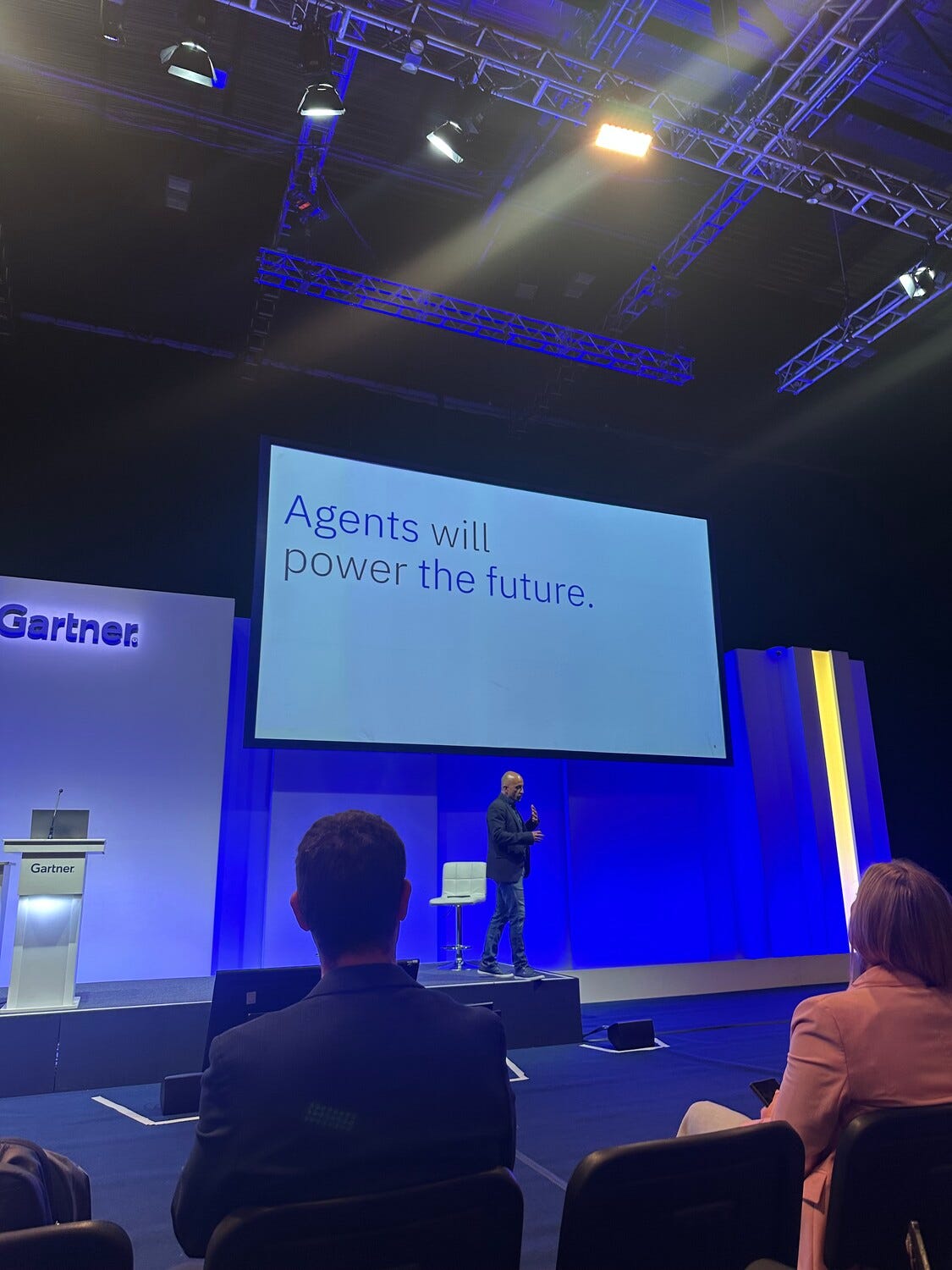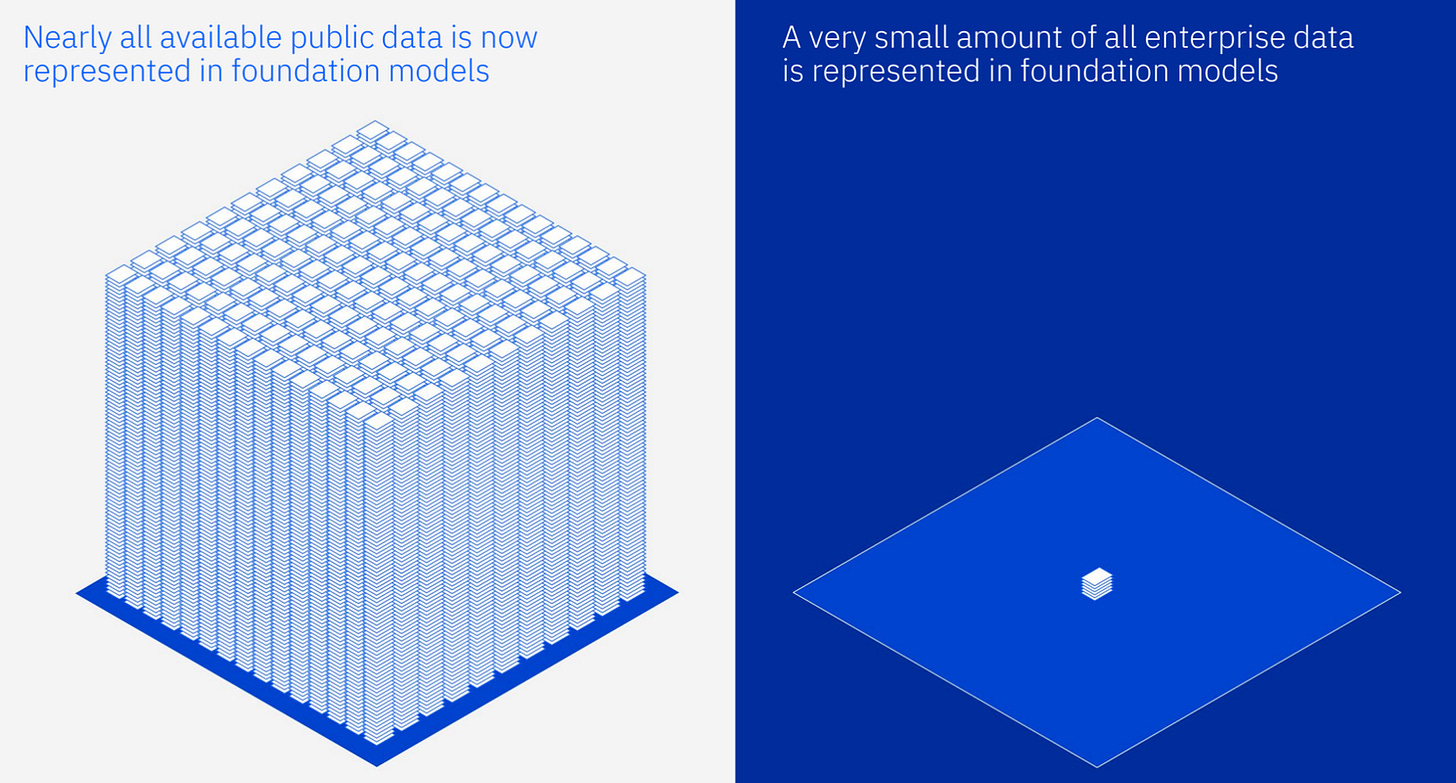3 Day Deep Dive at Gartner Data & AI Summit: What It Means for AI in 2025
Last week, I had the opportunity to attend the Gartner Data & Analytics Summit in London. Over three days, I had conversations with global executives at the IBM booth, from Saudi Arabia to Singapore and the US, and ran live AI demos (big shoutout to watsonx for never missing a beat).
The opening keynote reframed AI adoption not as a one-off implementation but as three interlinked journeys, giving us a grounded roadmap for navigating the AI landscape in 2025. Here’s my summary of key takeaways, both from client conversations and the sessions I attended.
3 Key Priorities for Your 2025 AI Strategy:
Tell value-driven stories (don’t just show tech)
Build a trusted data foundation
Focus on decision intelligence over dashboards
With 70% of CDAOs now responsible for AI strategy, data leaders are in the spotlight, carrying both the challenge and the opportunity to drive real transformation.
Day 1: Build Trust and Demonstrate Value
Gartner opened with some hard truths:
49% of orgs still struggle to demonstrate AI value
Over half are battling foundational data issues
They introduced a new lens for evaluating AI returns:
Return on Employee (ROE): Productivity gains that free up human potential. Think code assistants or LLM-powered tools like ChatGPT that augment individual performance.
Return on Investment (ROI): Tangible financial outcomes driven by process improvements. For example, embedding LLM APIs into workflows to reduce costs or increase throughput.
Return on Future: Strategic bets that unlock new market opportunities, such as investing in AI capabilities that enable entirely new products, services or business models.
🛠 Practical Advice:
“Start with trust”: Give stakeholders a heads-up on trends and impact. Focus on what matters, not what’s flashy.
Always connect to business outcomes: Frame AI initiatives in terms of solving real pain points.
Lead with problems, not tech: A solutions-first mindset beats a tools-first approach every time.
Day 2: Build Reusable Data Foundations
2025’s top data trends? Think:
Highly consumable data products
Advanced metadata management
Seamless multi-modal data fabrics
Forget one-off use cases. The summit emphasised a shift to “reuse cases”, modular data products designed for cross-functional scalability.
“Start with business-critical use cases, then correlate and scale to remove data bottlenecks.”
🛠 Practical Advice:
Prioritise data products: Don’t build for one team; build for scale.
Focus on data readiness, not perfection: Fit-for-purpose is better than flawless.
Align governance with your culture: Policy needs to reflect how your org really works.
Bruno Azizi: Agents Will Power the Future
Bruno Azizi delivered a standout session on agentic AI, the next evolution beyond traditional systems.
“Agents will power the future” — not just models, but autonomous, adaptive systems
He underscored the need for robust data infrastructure and clear governance to support the rise of AI agents.
Day 3: Human-Centred AI & Decision Intelligence
The final day focused on people. As Gartner put it:
“The future of AI is human-first.”
Their prediction:
By 2028, 80% of GenAI business apps will be built on organisations' existing data platforms.
This mirrors IBM’s approach, helping clients bring their own data to state-of-the-art models, safely and at scale.
🛠 Practical Advice:
Build on your existing data estate, leverage what you already have.
Use safe, enterprise-grade GenAI platforms. Scalability and governance matter.
Final Thoughts
The AI conversation is shifting. From use cases to reuse cases. From one-off pilots to enterprise-wide platforms. And from tech-first to trust-first.
2025 will be the year AI delivers. But, only for those who build foundations that scale.





